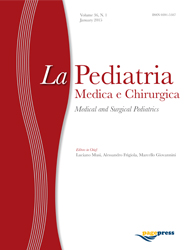Intestinal twin-to-twin transplant for short gut: Review of the literature and discussion of a complex case

All claims expressed in this article are solely those of the authors and do not necessarily represent those of their affiliated organizations, or those of the publisher, the editors and the reviewers. Any product that may be evaluated in this article or claim that may be made by its manufacturer is not guaranteed or endorsed by the publisher.
Authors
Paediatric Intestinal Transplantation (IT) presents the highest mortality on the waiting-list due to anatomical disproportion. Living-Donor IT (LDIT) offers the best advantages and when performed among identical monozygotic twins, it also benefits from unique immunology. According to MEDLINE/Pubmed, twin-to-twin LDIT has been performed in seven cases (6:7 males, median age of 32 years). None of the patients received immunosuppression postoperatively. Only one paediatric twinto- twin LDIT was carried out with a 160-cm mid-ileum tract: an interposed 4/5-cm arterial graft was required to ensure a tensionfree anastomosis to the anterior wall of the infra-renal abdominal aorta. In contrast, venous anastomosis was done directly to the inferior cava vein. We present a case for debate of a 13- month-old SBS patient where a twin-LDIT was discussed with parents, who decided to wait after careful analysis and ethical considerations.
How to Cite

This work is licensed under a Creative Commons Attribution-NonCommercial 4.0 International License.
PAGEPress has chosen to apply the Creative Commons Attribution NonCommercial 4.0 International License (CC BY-NC 4.0) to all manuscripts to be published.










